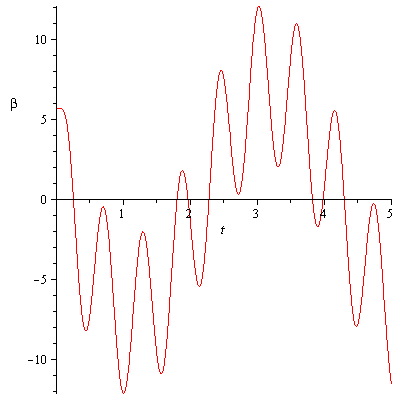Not surprisingly, the technical term for this is "wobble". Lets call your disk a top. An you will find that for tops with a point contact you will have precession. In that discussion you will note that they mention when the angular speed of the top decreases to a certain point, you will also get wobble and that wobble is more complicated.
However, I don't think you have a point contact like in the hyperphysics link on precession. Instead I suspect that as you spin you are in contact with the table on the edge of a small ring of metal. The physics of that is more analogous to spinning a coin or a bottle where the point of contact is moving along the edge of the coin or bottle.

The interesting question you ask is why does it start to wobble (more violently) and then stop wobbling (or at least less violently). With out knowing more about the nature of the contact with with bottom, I think what is happening when it is smoothly spinning it spinning on the edge of the ring and then when it is wobbling more violently that is more like the coin wobbling when it is more flat and it is the contact isn't as nice and predictable. However, unlike the coin you have a lot of angular momentum with the heavy disk, and in that wobbling you transfer some energy such that it starts to spin more on the outer edge of the ring or disk that is in contact with the table. It does that a while and then when it loses enough energy the process repeats.
If the contact is point contact I don't think you would see that periodicity. I am kind of using the coin and its rim as an analogy, You probably have something that is more like a small cylinder, or a small hollow cylinder, and if so how sharp the edge and how uniform that surface is would also make a difference.
If you have a point contact and the spinning mass is unbalanced you will also see both precession and wobble, but that wobble would not be starting and stopping as you seem to see in the video. You would typically see the precession rotate around and the wobble move back an forth.
To work out the mathematics for your special case would take a little work, but there are quite a few papers on the wobble of tops and the wobble of the earth that would be a good starting place.
It is a nice observation and video.






